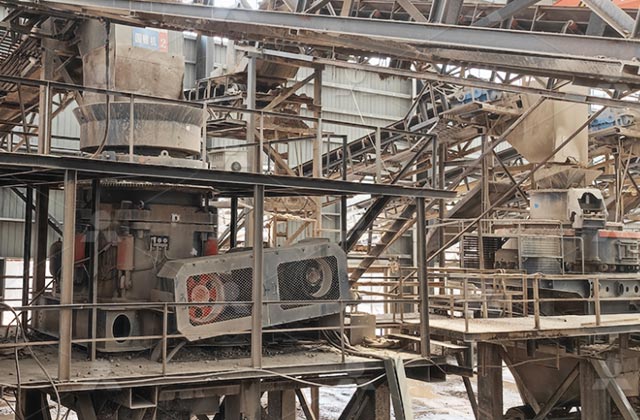Copper ore crushing requires a customized approach to maximize efficiency and output while minimizing operational costs. The production process typically involves three main stages: primary crushing, secondary crushing, and fine crushing, often followed by grinding and beneficiation. For a 500-ton-per-hour production line, a well-designed configuration might include a Grizzly feeder, a primary jaw crusher (such as a C6X series), a secondary cone crusher (like an HPT multi-cylinder hydraulic model), and a tertiary impact crusher or vertical shaft impactor for shaping. These machines work in sequence to reduce raw copper ore (often with high hardness and abrasiveness) from large lumps to finely crushed particles suitable for further processing.
The primary crushing stage uses a heavy-duty jaw crusher to break down large copper ore blocks (up to 1,200mm) into smaller pieces of about 200-300mm. The jaw crusher’s rugged design handles high compressive strength ores effectively while ensuring continuous feeding. For secondary crushing, an HPT hydraulic cone crusher is ideal due to its high crushing ratio, stable operation, and intelligent hydraulic system that automatically adjusts the discharge opening to maintain consistent output size. This stage further reduces the material to 50-70mm particles, optimizing the feed for the final crushing phase.

In the tertiary stage, a fine crusher or VSI sand maker processes the copper ore into smaller, uniformly shaped particles (5-20mm), enhancing leaching or flotation efficiency in downstream beneficiation. Modern crushing plants also integrate screening equipment, such as S5X heavy-duty vibrating screens, to classify materials and recycle oversized particles back into the system. Dust suppression systems and enclosed conveyors are critical for environmental compliance, especially in copper processing, where airborne particles can pose health and pollution risks.
To ensure smooth operation, automated control systems monitor the entire production line, optimizing crusher settings, feeder speeds, and energy consumption in real time. Regular maintenance, including wear-part inspection (mantles, concaves, blow bars), lubrication, and belt tension adjustments, minimizes downtime. Additionally, the use of high-manganese steel or composite alloys for crusher liners extends equipment life when processing abrasive copper ores, reducing long-term operational costs.
A well-planned copper ore crushing solution maximizes yield while adhering to environmental and safety standards. Modular designs and mobile crushing stations offer flexibility for remote mining sites, while fixed plants provide high-capacity processing for large-scale operations. Partnering with an experienced manufacturer ensures tailored solutions, from equipment selection to layout design, guaranteeing optimal performance for each unique ore deposit. With the right technology and expertise, copper producers can achieve efficient, cost-effective crushing operations that meet both production and sustainability goals.
